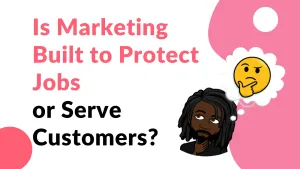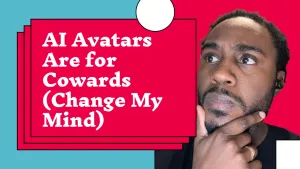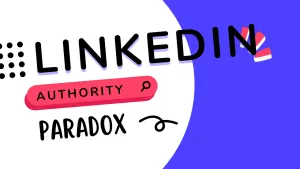Here’s a hot take: Most modern advertising isn’t built for customers, it’s built to protect marketing jobs.
I know, ouch. But hear me out.
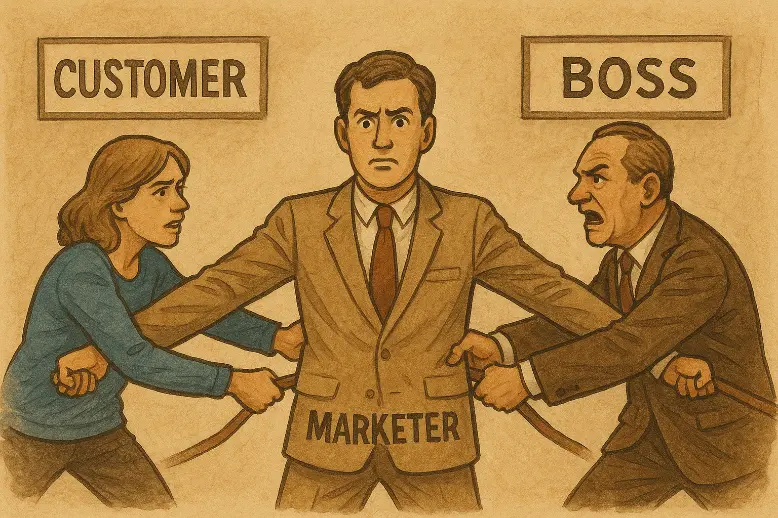
We’ve become so obsessed with attribution, metrics, and dashboards that we’ve forgotten what made ads great in the first place: they made people feel something.
These days? We’re not crafting stories that stick; we’re chasing clicks we can screenshot for the QBR. It’s not that the tools are broken. It’s that we’re using them to serve fear instead of vision. And as someone who’s spent the past 5-6 years inside the house of marketing, I’m starting to wonder: are we optimizing for what actually matters, or just for what’s easiest to justify?
The Rise of the ROI Safety Net: Marketing That Defends, Not Inspires
I’m still relatively new to this industry, but there’s something I’ve always found odd. Why does it feel like everyone in marketing is chasing what’s easiest to measure, even if it’s not what actually works?
When I first got into the field, I assumed advertising was about connecting with customers. Learning what makes them tick. Crafting stories that stick in their heads for years.
But what I walked into felt different. Budgets are leaning heavily toward what’s closest to the purchase. Campaigns are sliced up by channel silos. Success is defined by metrics that are easy to defend, not necessarily meaningful.
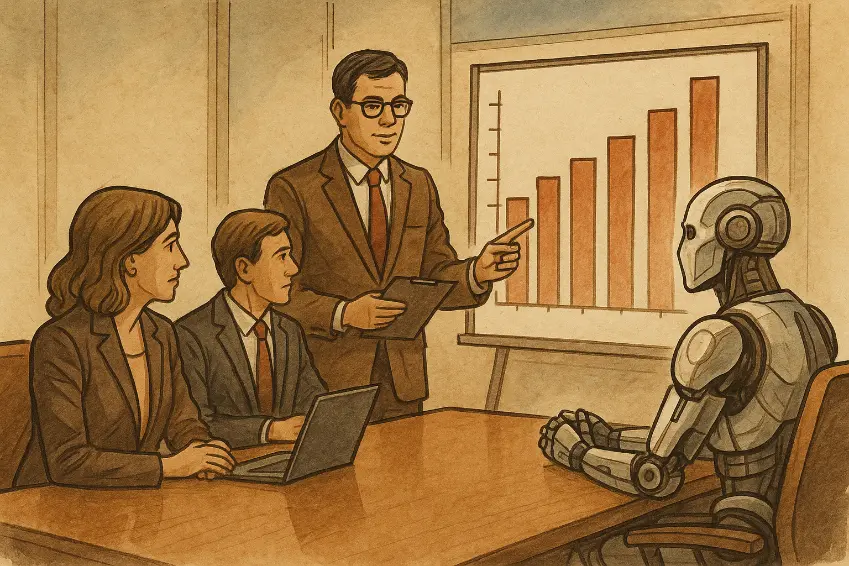
At first, I thought, “Maybe I just don’t get it yet.” But now I’m wondering if the real issue is that we’ve gotten so good at tracking performance that we’ve stopped asking whether we’re building anything lasting.
I mean, when did it become normal for TOFU campaigns to be an afterthought? Why are brand efforts often the first to get cut when budgets tighten? And how did we get to a place where ads need to justify their existence within 30 days?
I’m not trying to stir the pot. I genuinely want to understand. Because to me, this feels like a system optimized for short-term validation, not long-term value.
The Soul Swap: From Emotion to Metrics
The more I looked around, the more I started to notice a pattern. It wasn’t just isolated to one team or one company. It felt systemic, like the whole industry had quietly agreed on a new rulebook. One that prioritized what we can track over what we should care about.
Which brings me to this next big question.
Have we swapped customer-centric marketing for metric-centric marketing?
That might sound dramatic, but think about it: fifty years ago, advertising books were packed with insights about psychology, why people buy, how emotions shape behaviour, and what earns trust.
Today? Most of what I see in decks and meetings is about impressions, click-throughs, ROAS, and conversion rates. We’ve gone from “what makes people feel something?” to “what moved the needle this week?”

And look, I get it. If you’re a CMO with a quarterly target breathing down your neck, it’s tempting to pick the path that leads to quick results. But I keep wondering, at what cost?
Have we unintentionally created a culture where the safest move is the one that’s easiest to prove? And if so, are we slowly designing ads for the algorithm, not for actual people?
Because I don’t know many customers who say, “Wow, that ad changed my life, I just had to click it immediately.” But I do know people (myself included) who still remember an ad they saw 20 years ago, even if they didn’t buy the product until much later.
For me, it’s those old Nike soccer ads. The 1998 World Cup, one with the Brazil team playing in an airport? Absolute magic. No CTA, no promo code, no “Buy Now” button, just pure joy, rhythm, personality. Then there was the one in the early 2000s with the cage match on a boat, underground soccer with legends like Ronaldinho, Thierry Henry, and Totti. I didn’t have cable, but I still found a way to watch that ad online at 360p on Yahoo Videos. And here I am, two decades later, still thinking about it.
So, how did those ads work their way into my memory? They didn’t interrupt me, they invited me in. They weren’t optimized for clicks, they were optimized for culture.
That’s what makes me wonder: if Nike had to justify those ads with attribution reports and ROAS metrics in the next board meeting, would they even have gotten made?
Buying Decisions That Break the Funnel
And it’s not just about the ads we remember, it’s about how we actually make decisions.
Because when I zoom out and think about the brands I’ve chosen over the years, it rarely fits into the neat little funnel we all love to present in slides. The truth? Real buying behaviour is messy, emotional, and often unfolds over years, not weeks. And yet, we keep acting like customers live inside clean attribution models.
Let me give you a few examples from my own life.
This disconnect really hit me when I started looking at my own buying decisions. Like, who actually gets credit for them?
Take my bank, for example. I didn’t choose it because of a perfectly timed ad or a killer offer. They showed up at my elementary school one day, handed out savings booklets, and opened accounts for us. That was 30+ years ago. I still bank with them. That wasn’t a conversion funnel, it was a trust deposit. And I doubt anyone on the marketing team is still around to take the credit.
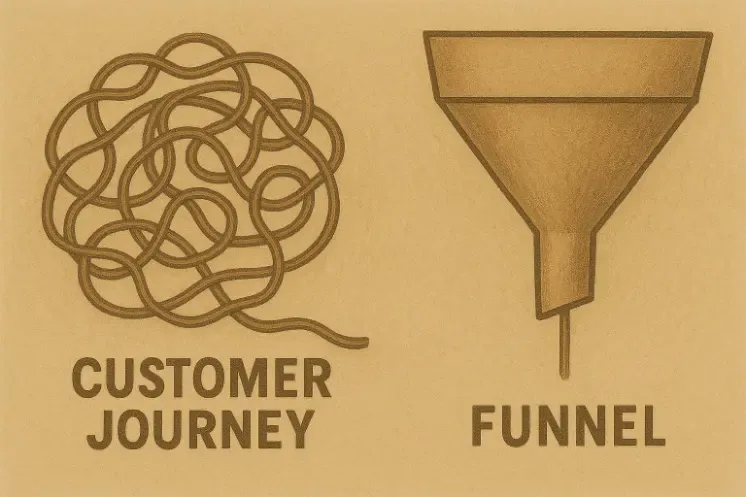
Or look at Wealthsimple. I first heard about them during the robo-advising wave in the late 2010s. Didn't sign up. Years later, in 2025, a friend sends me a video on WhatsApp, Wealthsimple Presents: The End of Banking?, and suddenly I’m seriously considering switching everything over. One brand. Two touchpoints. Nearly a decade apart. Who gets to “claim” that?
Same thing with my Subaru. It wasn’t the ad creative. It wasn’t a slick influencer campaign. It was the interest rate. Plain and simple. The numbers made sense at the time. And yet somewhere, a dashboard is probably counting that as a programmatic win or a retargeting success.
And that’s the weird part. I’m a real customer, but I’m not sure any of the attribution models would know what to do with me.
So it makes me ask: if our attribution tools can’t explain how real buying decisions unfold, why are we treating them like gospel?
Marketing as a Team Sport (But Everyone’s on a Different Bus)
The more I thought about it, the more I started to realize, it’s not just how we measure marketing that’s broken. It’s also how we structure it.
Because even if we wanted to build a campaign that mirrored how people actually buy, I’m not sure we’d be set up to do it. And that brings me to another head-scratcher:
Why is advertising done like a series of solo acts when customers experience it like a full concert?
In every company I’ve worked with or talked to, it feels like each channel, Paid, Organic, Social, Programmatic, is its own little fiefdom. Each team has their own budget, their own KPIs, and, let’s be honest, their own internal competition. It’s not about what works together, it’s about what wins credit.
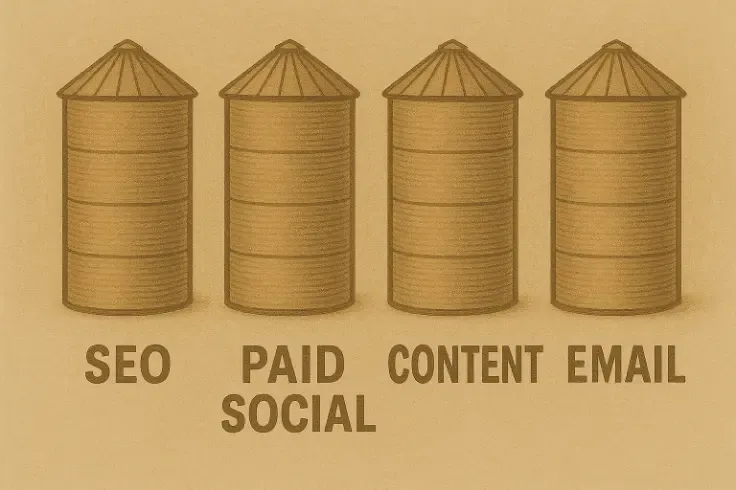
But here’s what I keep coming back to: customers don’t think in channels. They don’t separate the blog post from the Instagram ad from the YouTube pre-roll. It’s all one brand experience to them.
So why aren’t we working that way?
It’s wild to me that we’ll spend weeks optimizing a carousel for engagement or running A/B tests on headlines, but we rarely ask, “What’s the full story we’re telling across everything?” Imagine if instead of each team running their own race, we built campaigns like ensemble casts, each channel playing its part to bring a shared narrative to life.
Maybe we’d spend less time fighting over budgets and more time making ideas stick.
Because I have a hard time believing that back in the days of Sports Illustrated, Vogue, and the Robb Report, brands ran one print ad and then declared the campaign a failure after 30 days. But that’s how we treat most digital efforts now, like one asset, one sprint, one shot.
What could we build if we stopped optimizing in isolation and started thinking as a team?
Fast-Food Marketing vs. Michelin-Star Brands
And maybe that’s the heart of it.
We’ve built a system that rewards fast wins over lasting change. Quick campaigns over thoughtful strategy. Channel-specific “success” over unified impact. It’s no wonder the work often feels scattered, and honestly, kind of forgettable.
That’s when it hit me: this isn’t just a marketing problem. I’ve seen this pattern before.
Before I got into marketing, I was in the fitness world. And the same tension played out there too.
You had the “fast-food” trainers, always chasing the next trend. TRX one month, CrossFit the next. Low-fat diet to paleo to keto in a flash. These were the folks promising six-pack abs in six weeks, using whatever buzzwords were hot at the time. Sure, they got attention. But their clients were constantly yo-yoing, never building something that stuck.
Then you had the Michelin-star trainers. The ones who built systems around real lifestyle change. They focused on habits, confidence, and education. No gimmicks, no hacks, just consistent, thoughtful coaching. Their clients didn’t drop 20 pounds in a month. But they kept it off for life.
Sound familiar?
The fast-food approach is performance marketing: high output, short runway, heavy on the “quick win.” The Michelin-star method? That’s brand building. It takes time, trust, and a little guts, but the payoff lasts a whole lot longer.
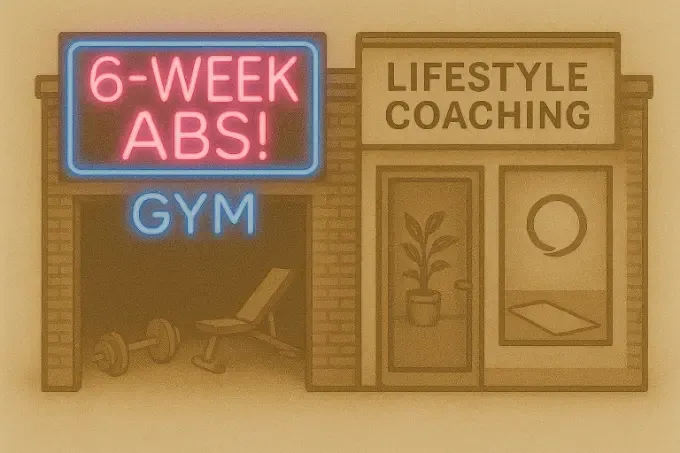
So here’s what I’m wrestling with: in today’s marketing culture, do we even allow room for the Michelin-star playbook? Or have we built an industry where the only way to “win” is to keep promising fast results, even if we know deep down they won’t last?
The Call to Reimagine: Don’t Make One Great Ad, Build a World
The more I sit with this, the more it feels like the problem isn’t just about how we plan or budget or measure.
It’s about how we think about advertising altogether.
Because if we know short-term sprints aren’t enough, if we know customers don’t follow clean funnel lines, then maybe it’s time to stop treating single ads like silver bullets.
What if a great campaign isn’t about the one hero ad, but about the supporting cast that surrounds it?
Back in the day, you could drop a legendary 60-second TV spot, buy some magazine placements, and call it a day. But that playbook doesn’t work anymore. People don’t consume media the same way. Heck, a lot of people go out of their way to block ads now (I know I do). And honestly? That says more about ad quality than attention spans.
Today, it should not be about one perfect piece of creative, it should be about building a world your audience actually wants to step into. That might be a mix of short-form video, behind-the-scenes content, stories from real users, thought leadership on LinkedIn, and yes, even the humble email. Not because you need more stuff, but because customers need more context.
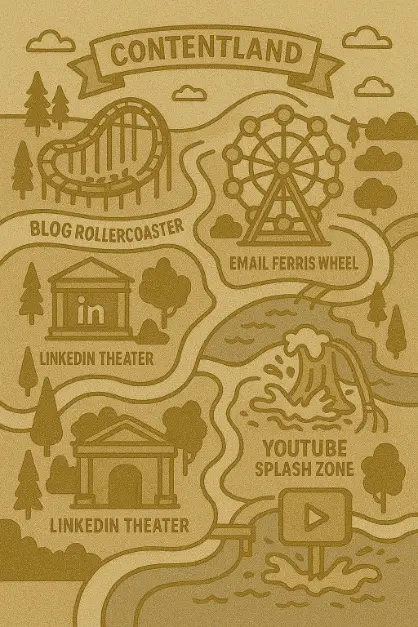
Think less of “ads as announcements” and more of “campaigns as conversations.”
And maybe, just maybe, the job of advertising isn’t to chase attribution, but to create something sticky enough that your customer’s kid buys it 20 years later.
Closing Question:
So here’s where I land:
Are we designing marketing to truly connect with people, or just to prove we did something?
I don’t have all the answers. But if you’ve ever looked around and thought, “There’s got to be a better way to do this”.
Let’s talk about it.

